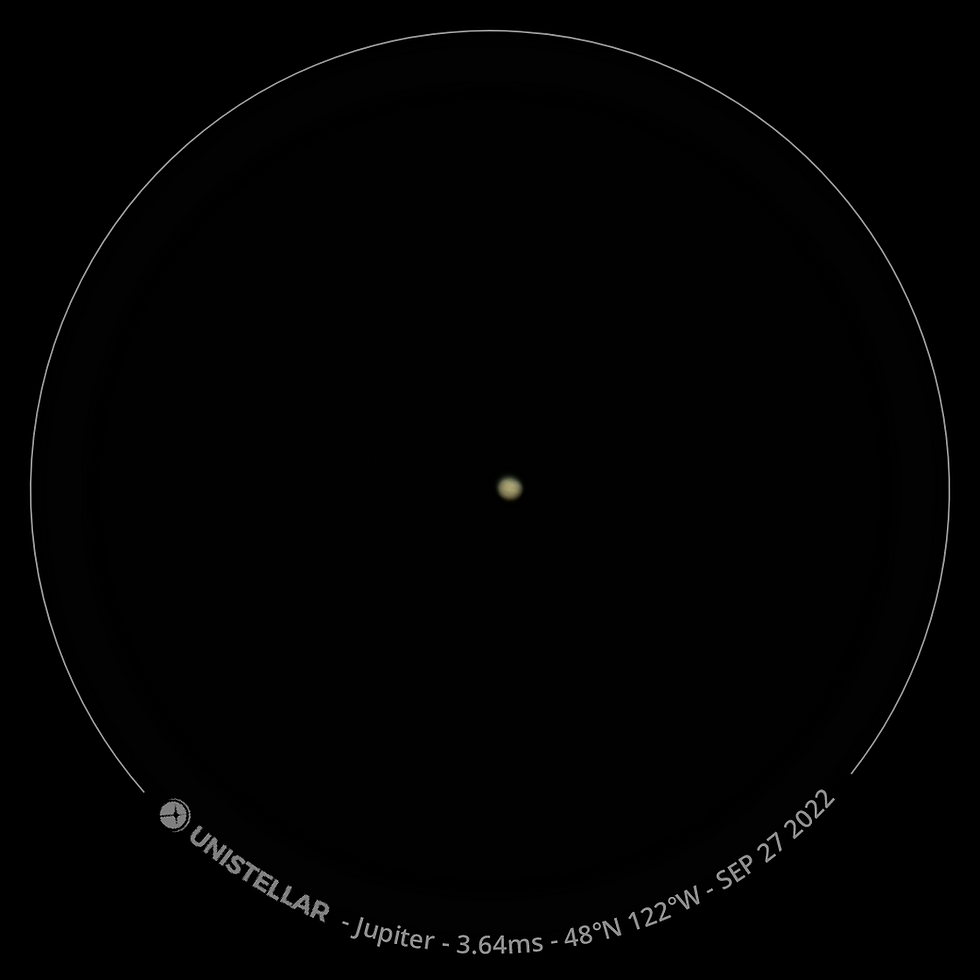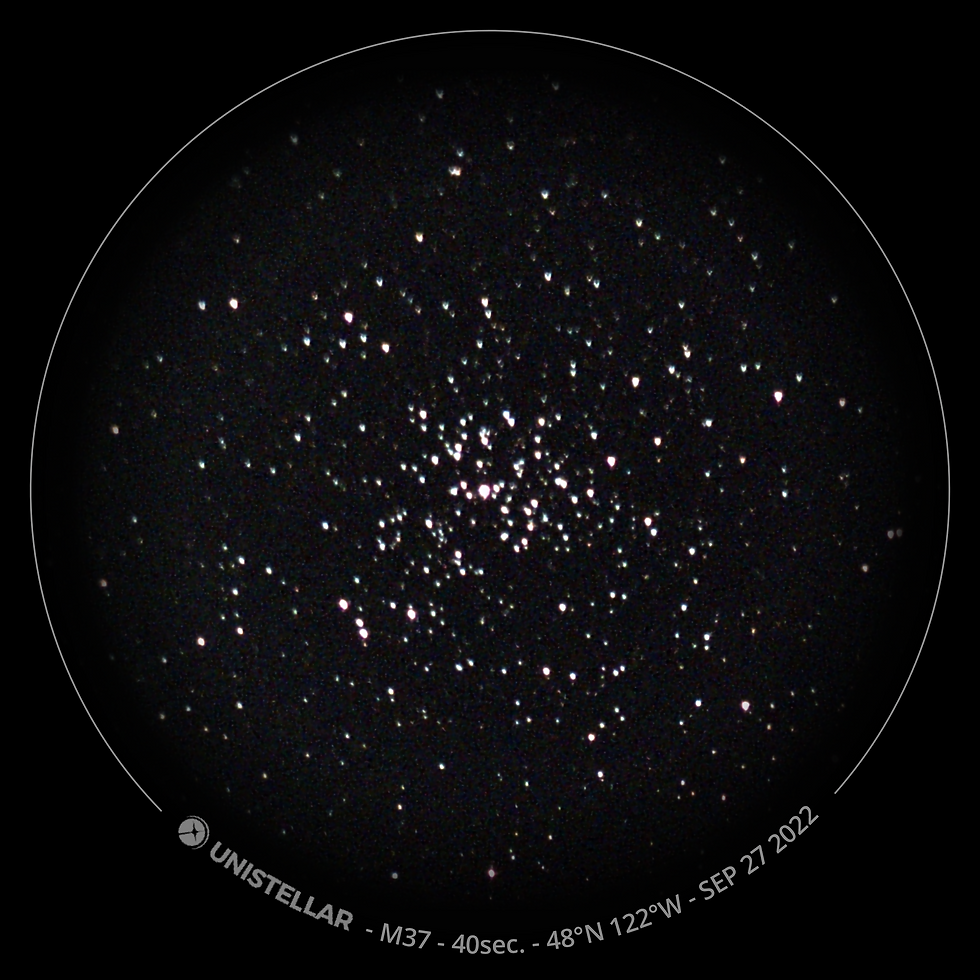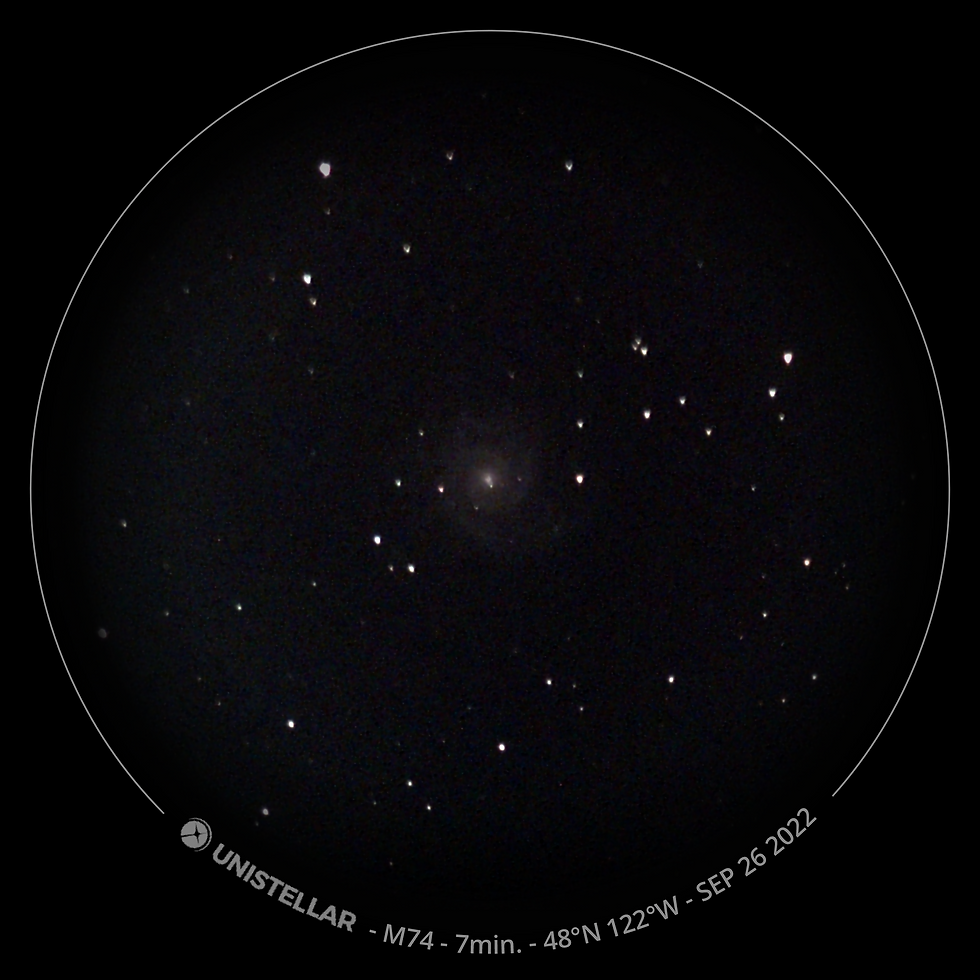September 2022 Stargazing Photos
- ekevans5
- Jan 16, 2023
- 5 min read
Hello everyone. This is my first post in about 4 months. I took these photos last September but I just didn’t get around to posting them until now. I have been awfully busy lately with work, family, travel, etc. I had minor surgery last October. I’m fine. Anyway, I thought the best way for me to prepare this blog entry was to keep the writing short and simple. (Sometimes I wonder if people read what I write or just look at the pictures.)
Planets
NOTE: My telescope’s last software update contains a bug that causes it to mislabel some of the photos of planets. Trust me. My descriptions in the blog entry are correct.

This is a picture of Jupiter at opposition. That is when it is at its biggest and brightest when viewed from the Earth. “Opposition” is when a planet, the Earth, and the Sun are all in a straight line.

Here is another picture of Mars. It is approaching opposition but won’t be there until December. (Remember, I took these pictures in September.)

This picture of Pluto is actually better than the one I took last year. The telescope was focused better this time. Pluto is the faint brown spec at the center of the photo. If you are looking at this picture on a small screen, you may need to zoom in to see it.

This picture of Saturn shows that it is well passed opposition. Saturn is moving away from us so this picture of the planet is smaller than the last one I published. Check out earlier postings to see the difference.
Comets, Asteroids and Moons

This is my first photo of two of Saturn’s moons; Titan and Enceladus. I had to adjust the telescope differently to see these moons. That’s why Saturn looks like a star on the right side of the photo. Titan is in the center. Titan is the largest moon of Saturn and the second-largest natural satellite in the Solar System. Enceladus is to the left of Titan. With its global ocean, unique chemistry and internal heat, Enceladus has become a promising lead in our search for worlds where life could exist.
Nebulae

The Crab Nebula (catalogue designations M1, NGC 1952, Taurus A) is a supernova remnant and pulsar wind nebula in the constellation of Taurus. It is about 6,500 light years from Earth. Despite the amazingly detailed pictures you may be used to seeing of the Crab Nebula, don’t expect too much from my telescope. This photo is what you see through a telescope that only collects visible light. You’ll likely see an oval-shaped smudge of light, like a faint fingerprint — but don’t let that disappoint you. This seemingly innocuous glow is the guts of a massive star whose supernova was seen in the sky in the year A.D. 1054. That supernova was so bright that it outshone Venus and was visible during the day for nearly a month. Today, nestled in the center of the mess is the Crab pulsar, a rapidly spinning neutron star born from the crushed core of a once-brightly shining sun.

NGC 1491 is sometimes called the "Fossil Footprint" nebula. It is an emission nebula located at about 10,700 lys in Perseus.

NGC 7129 is a reflection nebula located 3,300 light years away in the constellation Cepheus. A young open cluster is responsible for illuminating the surrounding nebula.
Star Clusters

Messier 10 or M10 (also designated NGC 6254) is a globular cluster of stars in the equatorial constellation of Ophiuchus. The object was discovered by the French astronomer Charles Messier on May 29, 1764, who cataloged it as number 10 in his catalogue and described it as a "nebula without stars". Luckily, my telescope is powerful enough to see many of the individual stars in the cluster. M10 is about 14,300 light years away.

Messier 37 (also known as M37 or NGC 2099) is the brightest and richest open cluster in the constellation Auriga. What I like most about this photo is that you can clearly see the different colored stars in the cluster. M37 is “only” 4,500 light years away from us.

NGC 6229 is a globular cluster located in the constellation Hercules. It was discovered by the British astronomer William Herschel on 12 May 1787. NGC 6229 is about 100,000 light years away from Earth. That’s why this picture does not contain a lot of detail in it.

NGC 6934 (also known as Caldwell 47) is a globular cluster of stars in the northern constellation of Delphinus, about 52,000 light-years distant from the Sun.
Stars

Polaris is a star in the northern circumpolar constellation of Ursa Minor. It is commonly called the North Star or Pole Star. With an apparent magnitude that fluctuates around 2 it is the brightest star in the constellation and is readily visible to the naked eye at night. The position of the star lies less than 1° away from the north celestial pole, making it the current northern pole star. The stable position of the star in the Northern Sky makes it useful for navigation. You can find Polaris at the end of Ursa Minor’s (the Little Bear) tail. Another way to think of it is as the first star in the Little Dipper’s handle. It is around 380 lys away.

Electra, designated 17 Tauri, is a blue-white giant star in the constellation of Taurus. It is the third-brightest star in the Pleiades open star cluster (M45). It is 444 lys from us.

Nembus is a giant star that is in the constellation of Andromeda, Ethiopian Princess. Nembus is an orange to red star. It is a main star in the constellation Andromeda and makes up part of the constellation’s outline. 174 lys away.
Galaxies

IC 342 (also known as Caldwell 5) is an intermediate spiral galaxy in the constellation Camelopardalis, located relatively close to the Milky Way. Despite its size and actual brightness, its location behind dusty areas near the galactic equator makes it difficult to observe, leading to the nickname "The Hidden Galaxy”. That is why the galactic core is clearly visible in this photo but the spiral arms are quite faint. If the galaxy were not obscured, it would be visible to the naked eye. The dust makes it difficult to determine its precise distance; modern estimates range from about 7 million light-years to about 11 Mly.

Messier 74 or M74 (also known as NGC 628 and Phantom Galaxy) is a large spiral galaxy in the equatorial constellation Pisces. It is about 32 million light-years away from Earth. The galaxy contains two clearly defined spiral arms.

NGC 147 (also known as DDO3 or Caldwell 17) is a dwarf spheroidal galaxy about 2.58 Mly away in the constellation Cassiopeia. NGC 147 is a member of the Local group of galaxies and a satellite galaxy of the Andromeda Galaxy (M31). It forms a physical pair with the nearby galaxy NGC 185, another remote satellite of M31. It was discovered by John Herschel in September 1829. Visually it is both fainter and slightly larger than NGC 185 (and therefore has a considerably lower surface brightness). NGC 147 is faint in my photo too but can be seen going diagonally through the center of the photo.



Comments